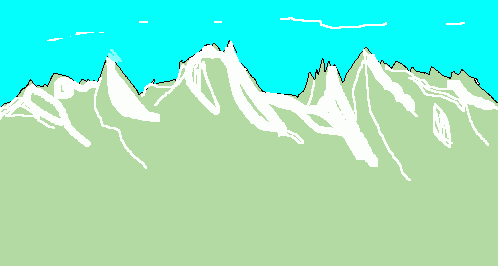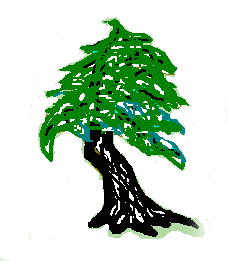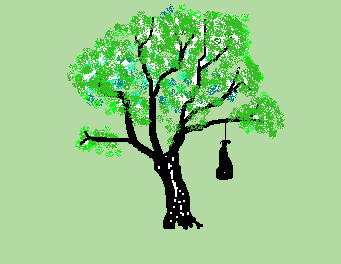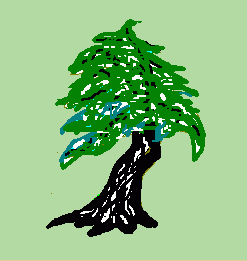

| HOME | THEORY | SLEEP | CLOTHES | MISC | ETIQUETTE |
FOOD

WATER:
Water is fundamental to the backpacking experience. Water need not be carried, depending upon the length of the hike and availability of water along the way. Sometimes especially in hot weather, it is best to drink a good deal of water camel style, before starting out. It should be assumed that all water in the wilderness is contaminated with Giardia or other bacteria. Giardia causes diarrhea and possibly intermittent stomach pains and discomfort, which may last until treated by a doctor. All water should be purified. This can be done by boiling for at least 5 minutes, which takes time, consumes fuel or necessitates the building of fires and all that entails. It can be purified with water purification tablets, but this can be dangerous if used improperly. Also tablet purified water usually tastes like iodine. The best and most convenient method of purification is a water pump. The best of these uses a ceramic filter with a side handle. I personally like the Mountain Safety Research pump. Water is pumped into a water bottle, either that attaches to the pump itself, or one can carry a separate container, such as a one gallon plastic water bottle. To pump a gallon of water should take from 15 to 25 minutes. Pumping water is something of a chore, but nothing like boiling it. If the pump becomes very difficult, a ceramic filter can be easily cleaned. If the water source has a great deal of fallen tree pollen in it, the pump can become difficult fairly quickly. The water pump should not be left by the water side or where small animals can reach it since some like to chew on the plastic tubing.STOVE:
A portable stove might be considered as necessary for backpacking. Fires are messy, blacken the pots, dangerous, illegal depending on the forest and the season, may be difficult to produce in rain, and the gathering of wood is a lot of work and may be disruptive to the environment. Permits are usually required for fires and may also be required for stoves. Stoves are clean, can be used anywhere and at anytime and are fairly safe. The only downside to a stove and its fuel is the weight which must be carried, which can range from as little 1 pound to around 3. The backpacking stove and its fuel are usually but not always, two separate units. The fuel is carried in a pump pressurization container, independent of the stove. The fuel is generally white gas, although some some stoves are made to burn almost any volatile liquid. Fuel containers can come in different sizes used in reference to the length and necessities of an individual trip. Although some people like a stove for its cooking ability, i.e. ability to simmer liquid, otherwise its primary purpose is to boil water as quickly as possible, using the least amount of fuel. Stoves should be repairable in the field. I like the Whisperlite, again from Mountain Safety Research.
COOK KIT:
The cook kit includes a quart sauce pan, lid, plate, frying pan, dish soap, stove, wind screen, dish scrub, pan grip, hand rags, plastic soup spoon, and a knife. The sauce pan, lid, plate and the frying pan should all be as light weight as is possible to be found. The entire cook kit as everything mentioned above may be carried in the sauce pan including the stove. The sauce pan is used to boil water and cook such things as soup and stew. The fuel, normally white gas, is usually carried separately in pump pressurized containers which are compatible with the stove. A lid is convenient to bring water to a boil as fast as possible to save fuel, but is not essential as the dish or frying pan may serve this purpose. The frying pan is completely optional but may be necessary for the frying of fish. Dish soap can be carried in a very small plastic container. The wind screen is a strip of aluminum which can folded very compact, and is used to wrap around the stove to protect the flame from the wind, which increases effectiveness of the stove. Since a pan with handle is to bulky, a special pan grip can be purchased. Utensils can be limited to a durable plastic bowl shaped spoon and an all purpose light weight folding pocket knife with a wide lock back blade. A cup is also essential to backpacking. The best of these might be lightweight plastic 6 ounce by volume and double walled, to maintain warmth. The cup can be used for the drinking and the carrying of liquids, to mix things like powdered milk, and to make instant soup.STAPLES:
Staples are such things as salt, sugar, powdered milk, drink mix, coffee or tea, cooking oil and bread crumbs which are used primarily for the frying of fish. The drink mix is something powdered to mix with water. This can be such things as gator or lemonade, cool aid, lemon crystal, hot chocolate powder, instant coffee, tea or powdered milk. These individual items can be carried in small plastic containers. Oil should be carried in a container which is especially leak proof, and further insulated in a zip lock bag.BREAKFAST:
A good, quick and easy to fix breakfast is One-Minute Oatmeal which is oats chopped up. Oatmeal is one of the slowest burning carbohydrates which can give one energy lasting till into the afternoon. It is very light weight and easy to fix. A way to carry Oatmeal is in 12 ounce super light plastic water bottles. This makes it water proof, fairly damage resistant, and easy to measure such as one bottle equals four breakfasts. Powdered Milk is light and nutritious can also be carried in plastic bottles. A preparation of breakfast is suggested. Put water on to boil. Mix powdered milk with water in a cup. Pour chopped oats into a dish or frying pan. Add boiling water to Oatmeal until the consistency one desires is achieved. One can add sugar and mixed milk. Some of the milk can be left in the cup. Coffee or tea can be added to it with hot water. For clean up it is only necessary to rinse the Oatmeal from the dish into a hole in the ground with clean water. White or brown sugar is heavy, and can be carried in a small plastic container with a screw on lid. Powdered sugar is lighter if one doesn't mind the taste. Tea bags weigh nothing and freeze dried coffee crystals the same.LUNCH:
Lunch may consist of things like dried fruit, trail mix, crackers, cheese, nuts, salami, string cheese, candy and power bars plus maybe some drink mix. The cumulative weight of these items, of from four to seven days and more, can add up and be quite heavy. Personally I prefer just a couple of hard boiled eggs, although when in camp, Ramen soup and noodles is very light to carry. I replace the Ramen soup packet with something of better quality such as Wakane and Tofu Miso packaged soups. These also replace lost bodily salts while hiking. One needs only put some noodles and the packet mix in a cup and add boiling water. Eggs are nutritious and filling, small and easy to carry. However a special egg carrier is necessary. The weight per meal is quite low. The downside is that eggs should not be boiled before the trip, because they will spoil and thus a certain amount of fuel is necessary to boil them. But one can boil 6 at a time thus reducing the amount of fuel needed, and boiled water can also be put to dual uses such as washing dishes. Egg shells should not be left in the environment but should be carried out in a garbage bag brought specifically for this and other items, such fruit rinds, plastic wrappers and other waste.DINNER:
The lightest way to go for the main evening meal is the freeze dried packaged meals, just add hot water. These are lighter than almost anything else although, they can be a little expensive and a little bit tricky. One wants just the right amount of water so that these meals are not too runny, but sometimes this is not enough to soften dried meats. Other things that are relatively light are small noodles and powdered cheese, also Minute Rice with powdered gravy mixed with bits of dried mushrooms and such. Dried potato flakes are very light. Non-delicate fresh vegetables like garlic, onion, carrots, cauliflower, broccoli can be kept fresh by taking one or two light weight plastic containers, maybe about 3 x 8 inches, preferably rectangle shaped for packing, and drilling something like 4 quarter inch holes in the sides. Keep vegetables inside with some paper towel to absorb moisture. vegetables are cooked with the least fuel by chopping finely and frying in oil.| HOME | THEORY | SLEEP | CLOTHES | MISC | ETIQUETTE |

![]()
![]()